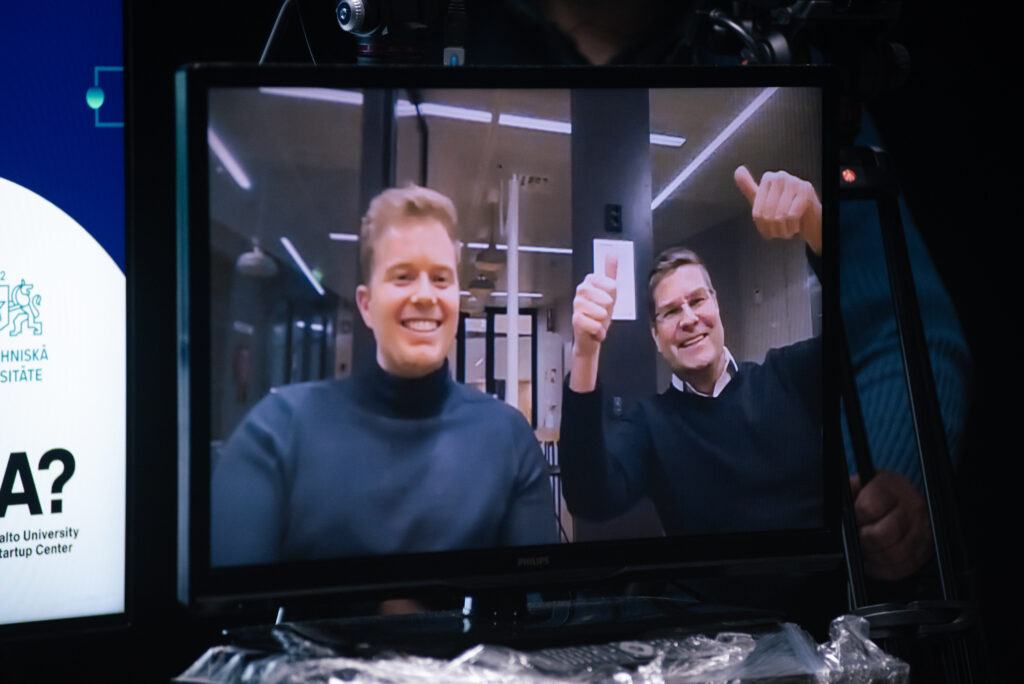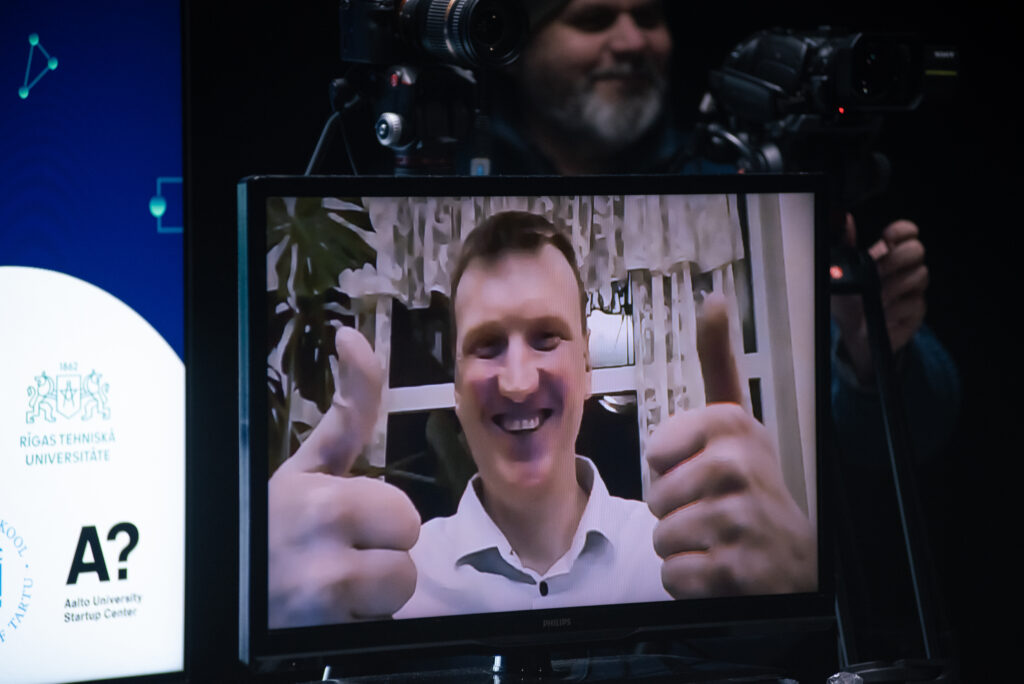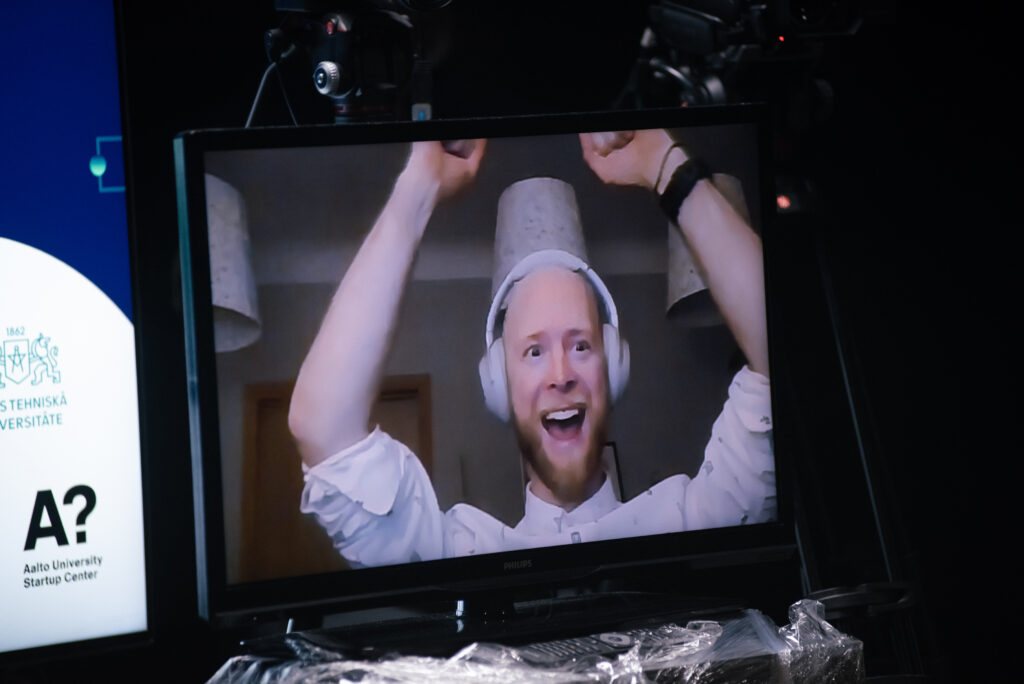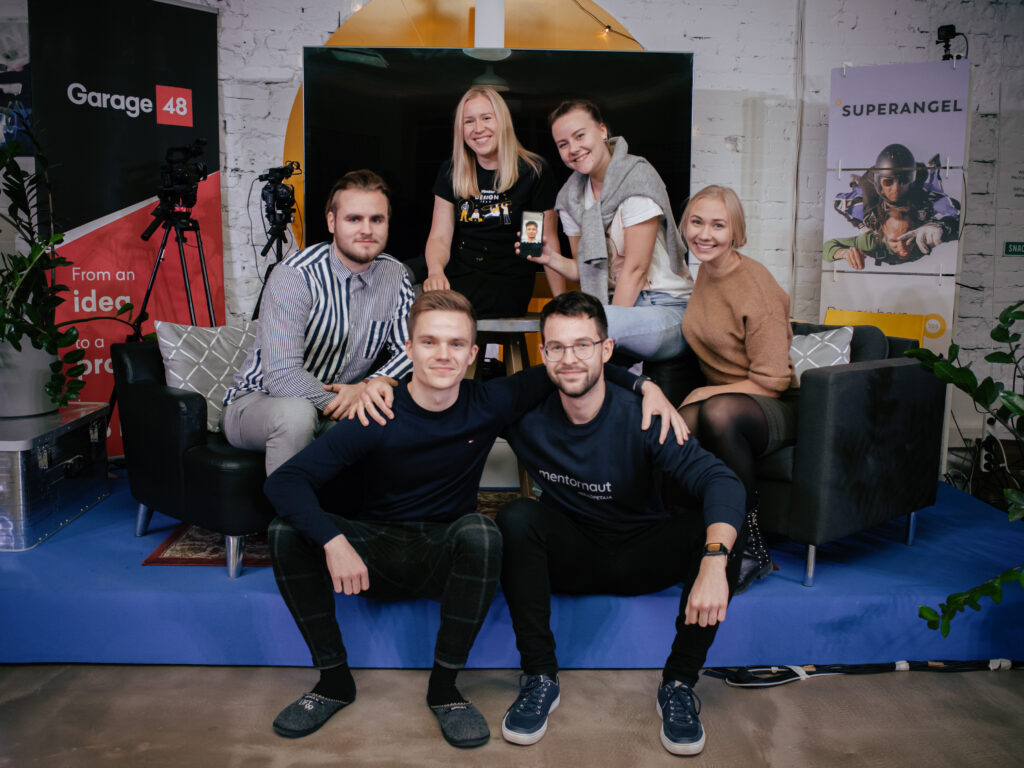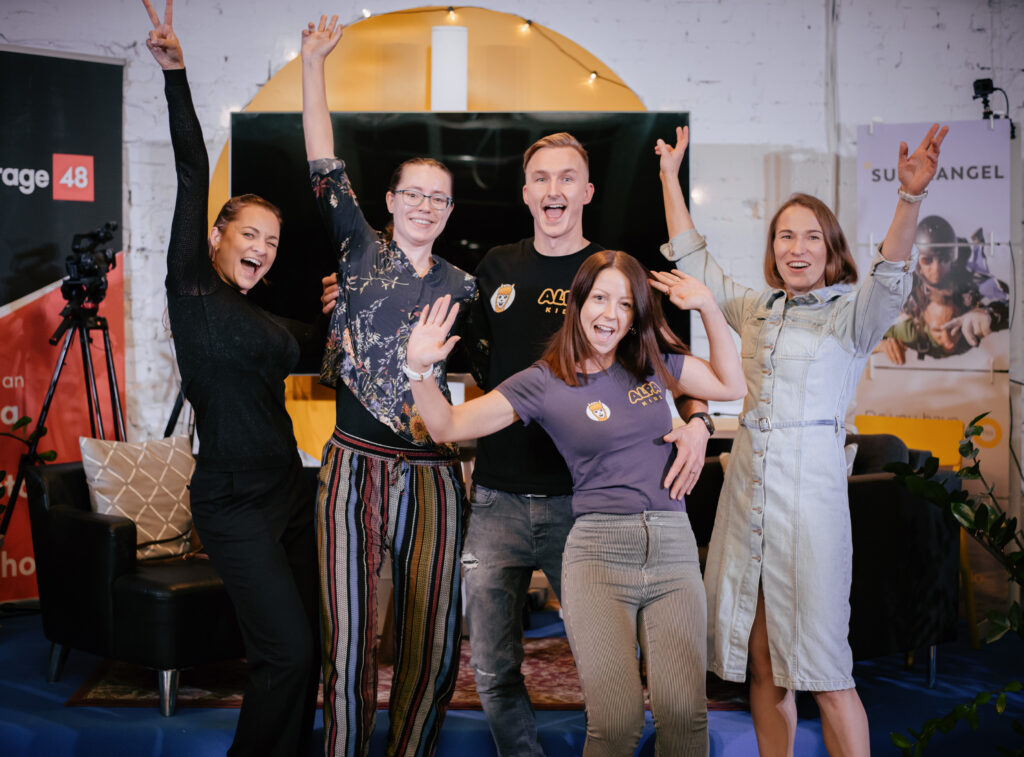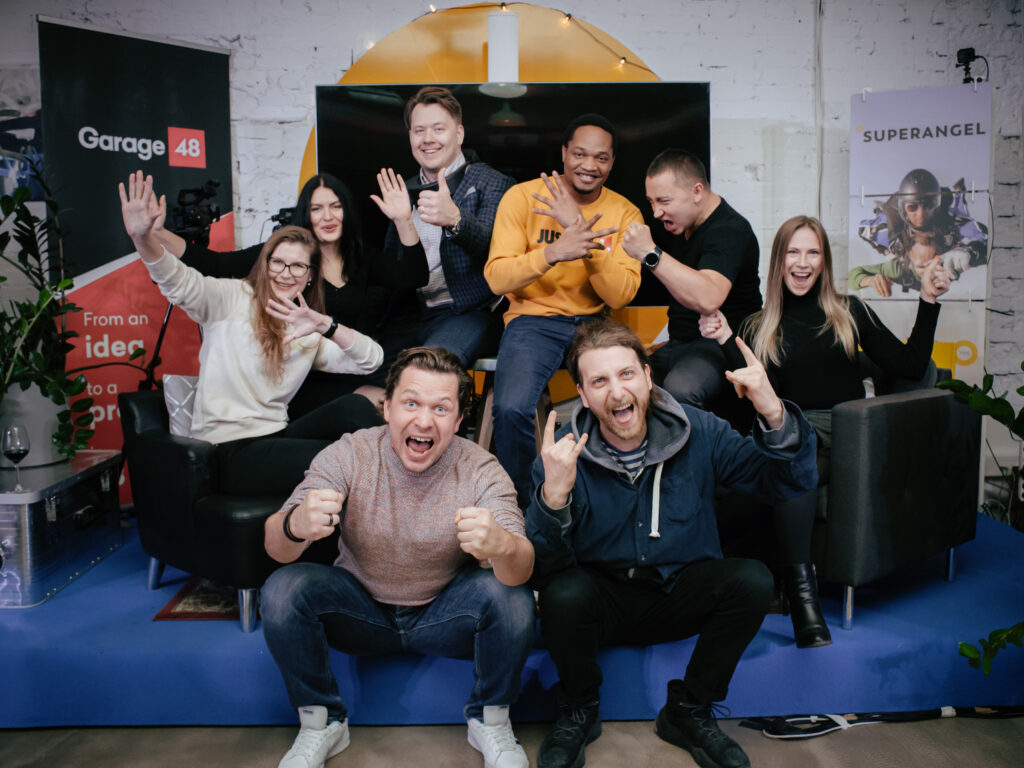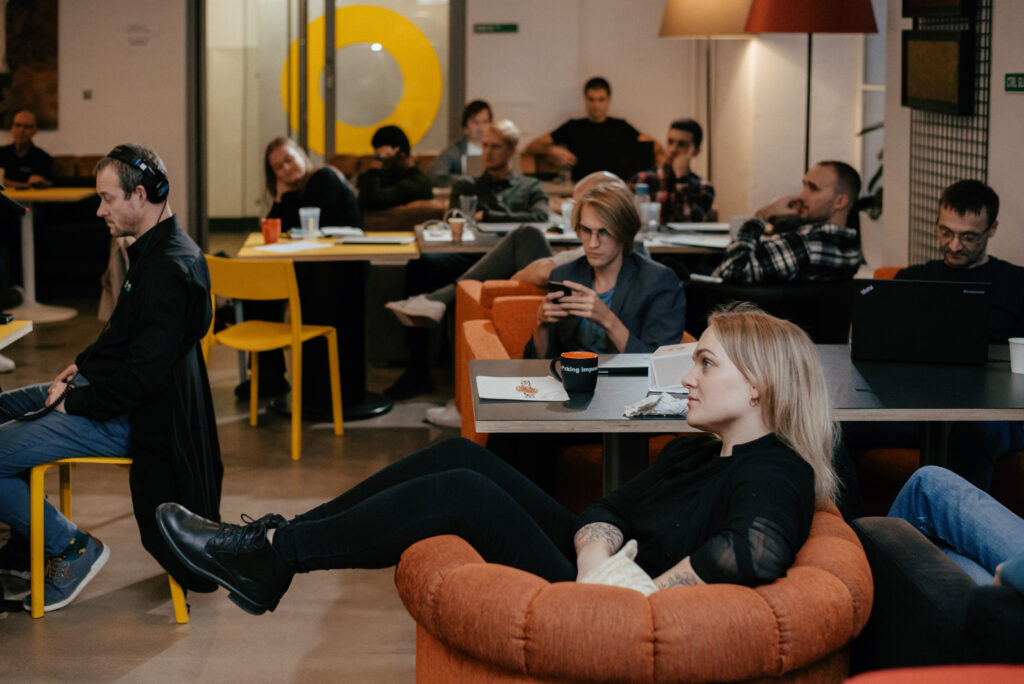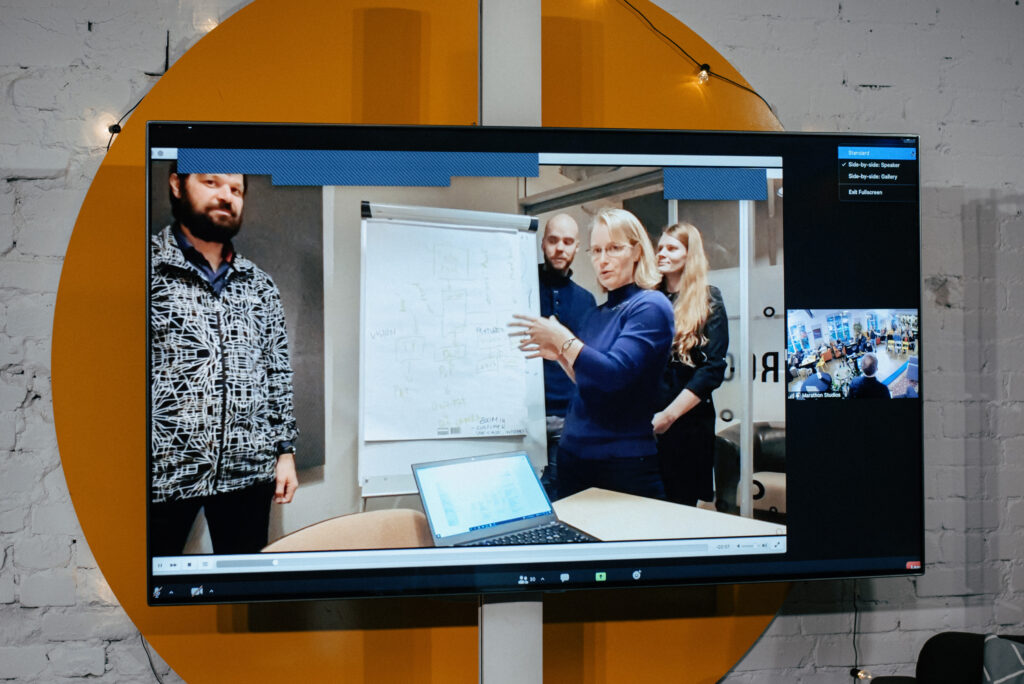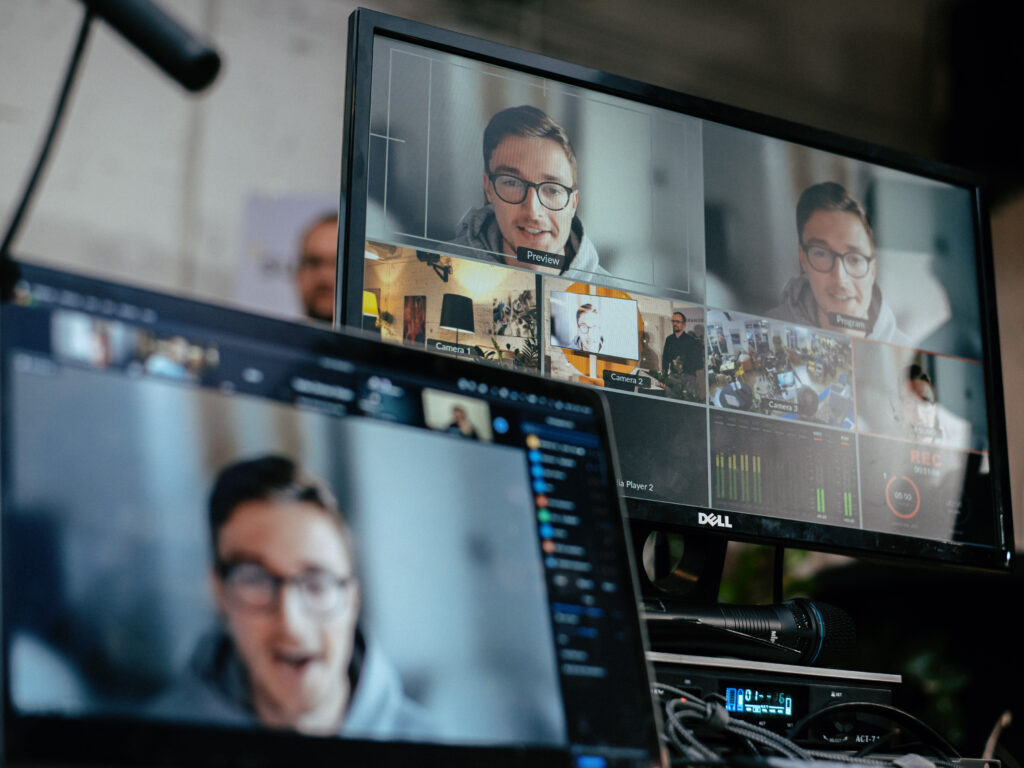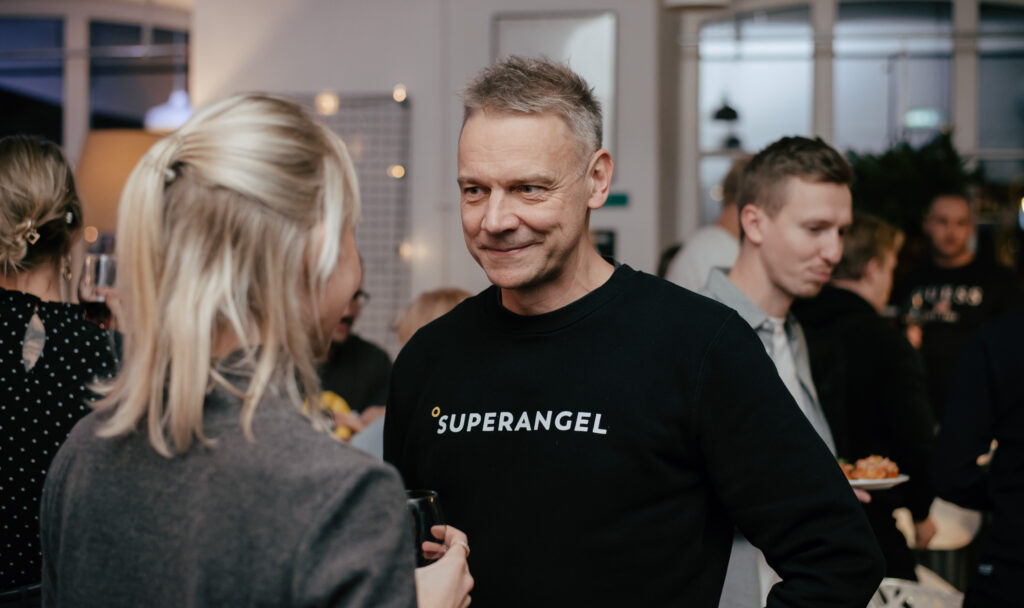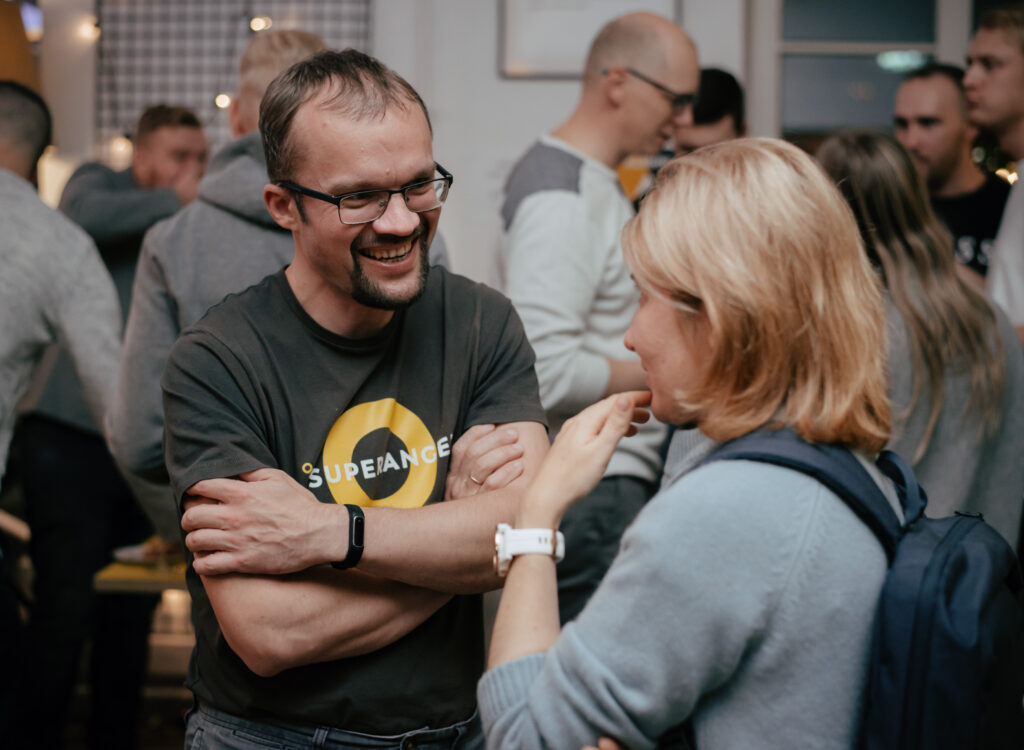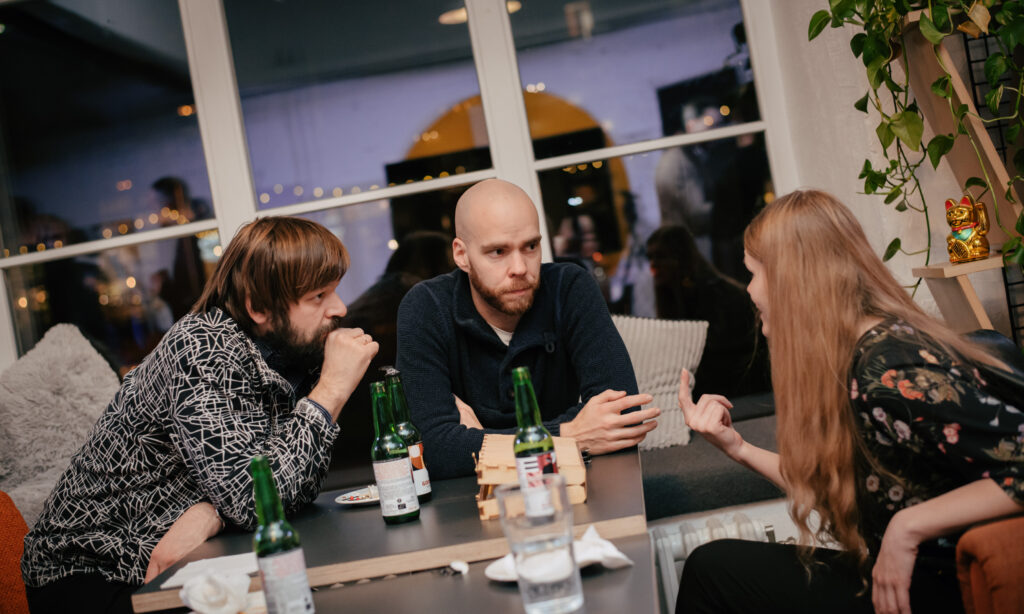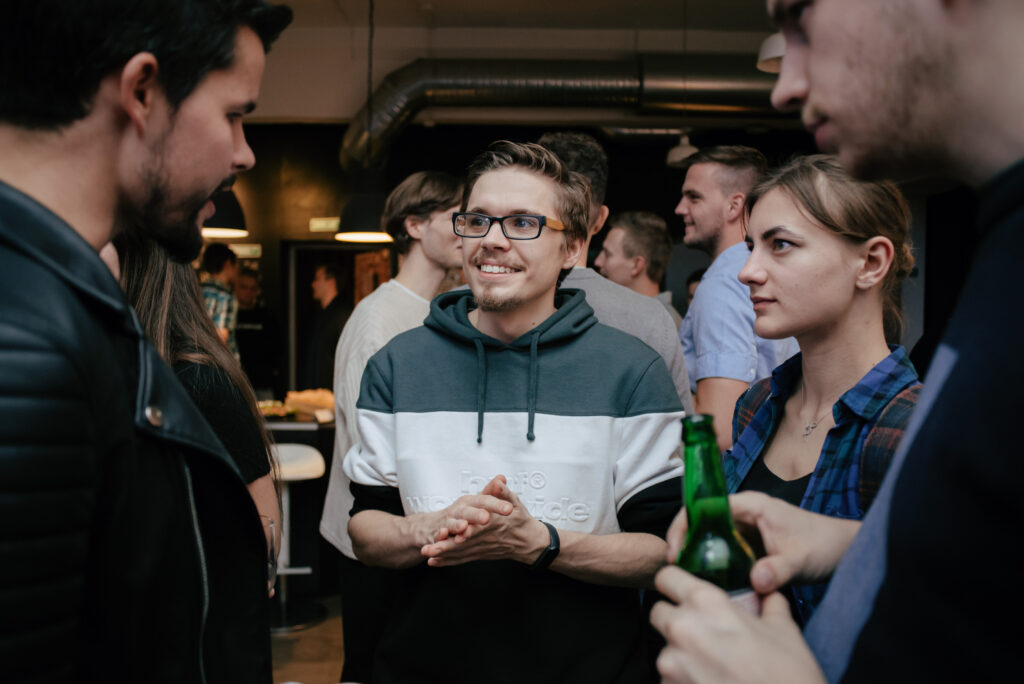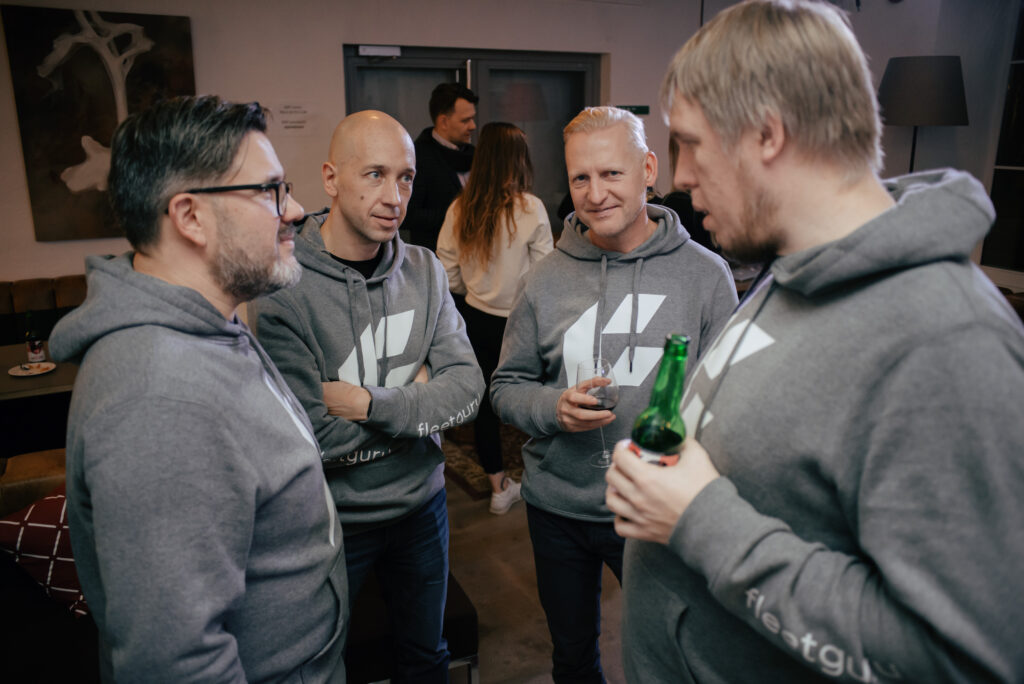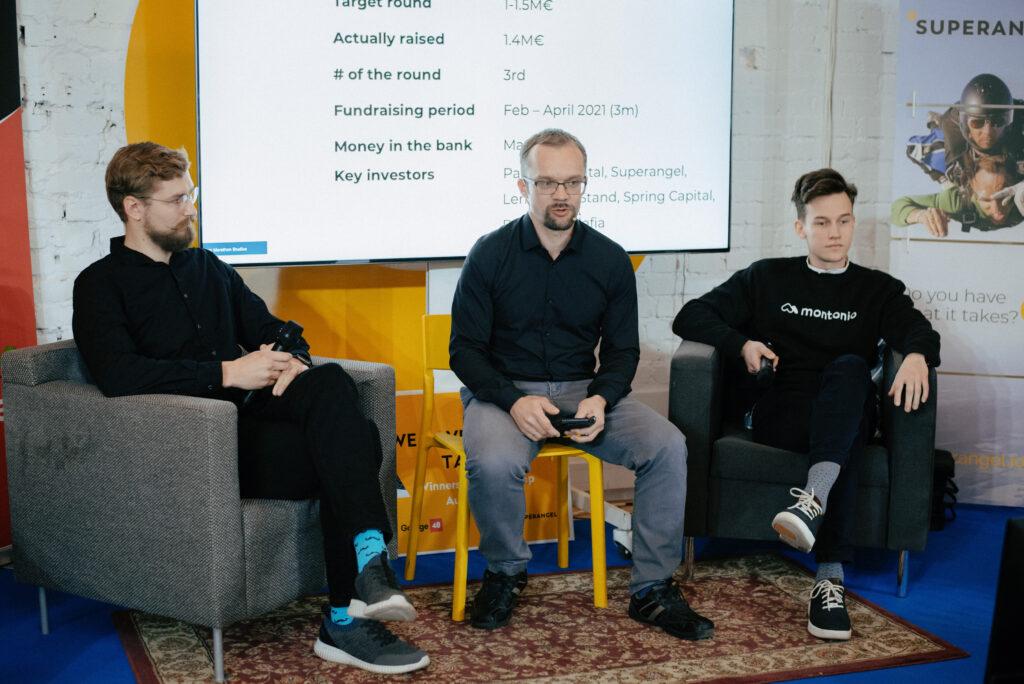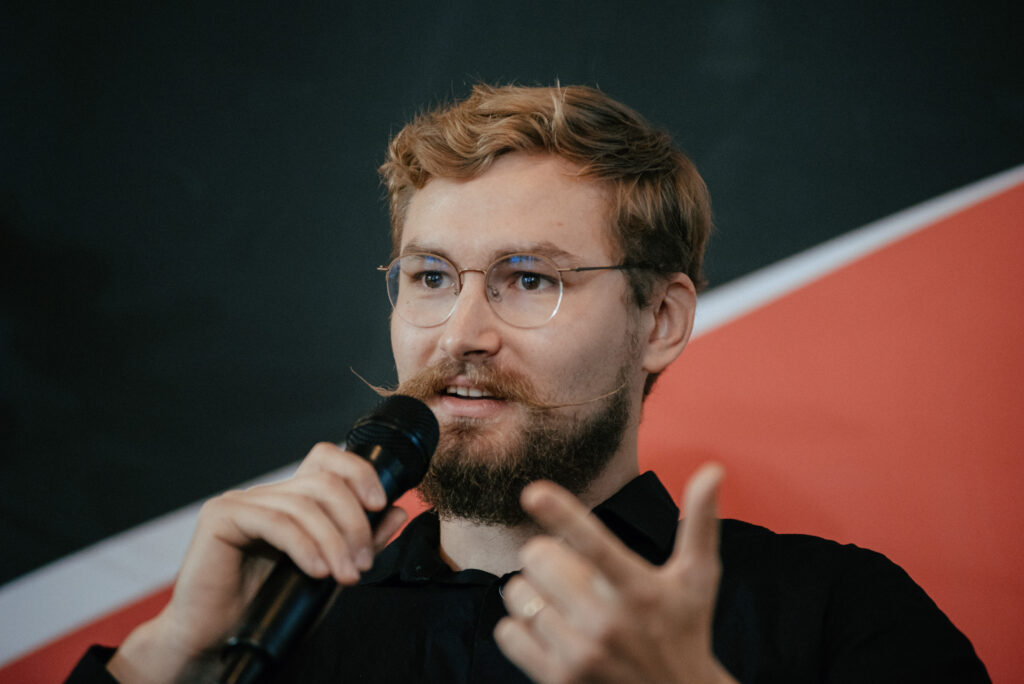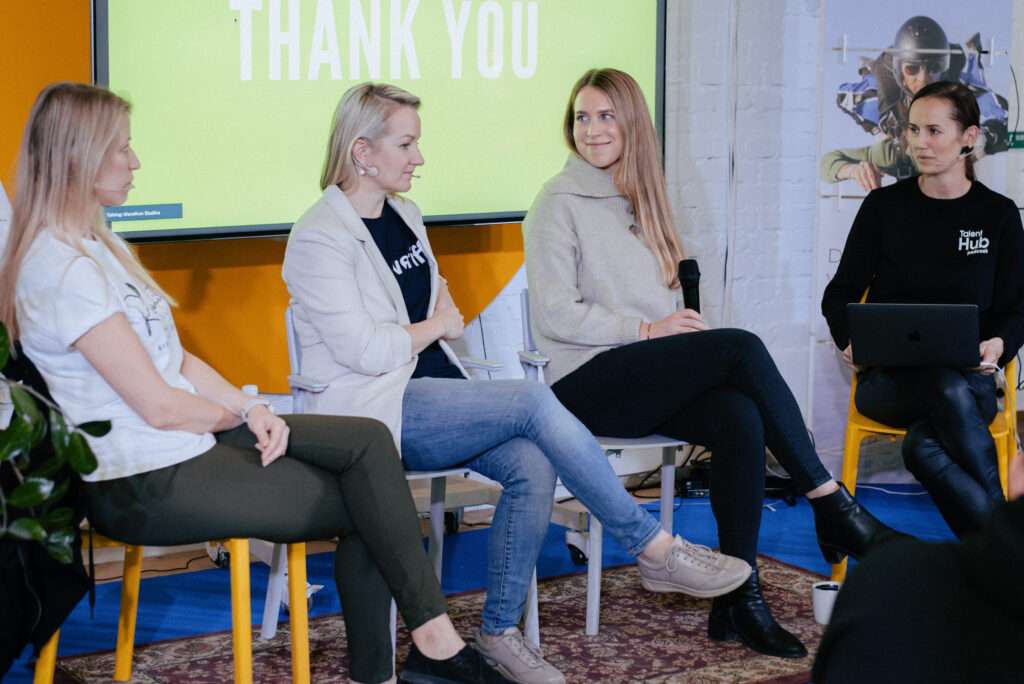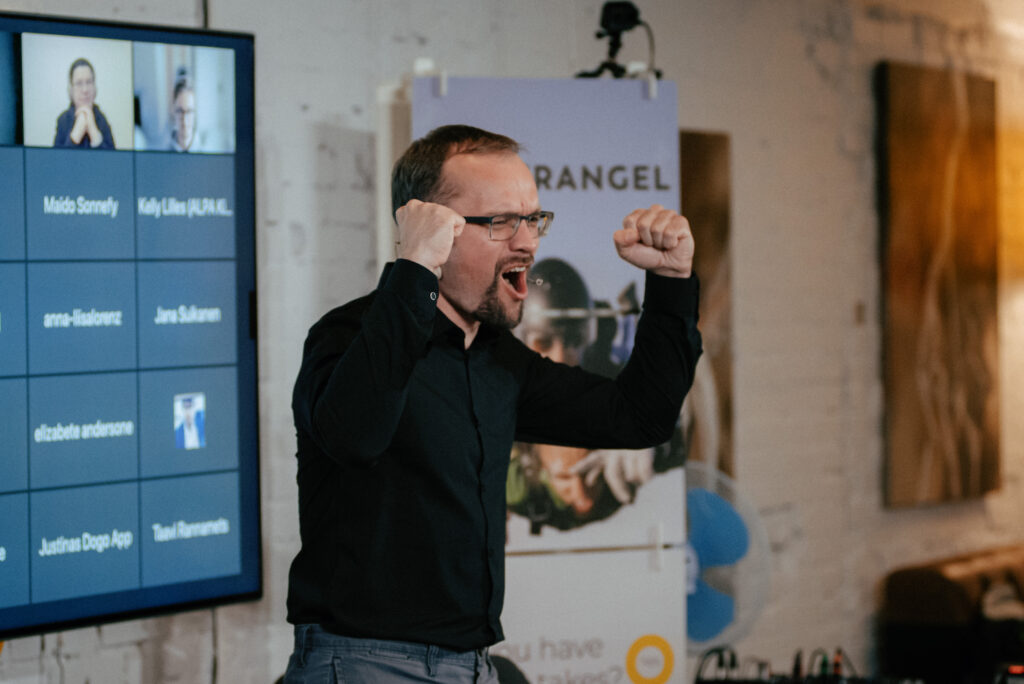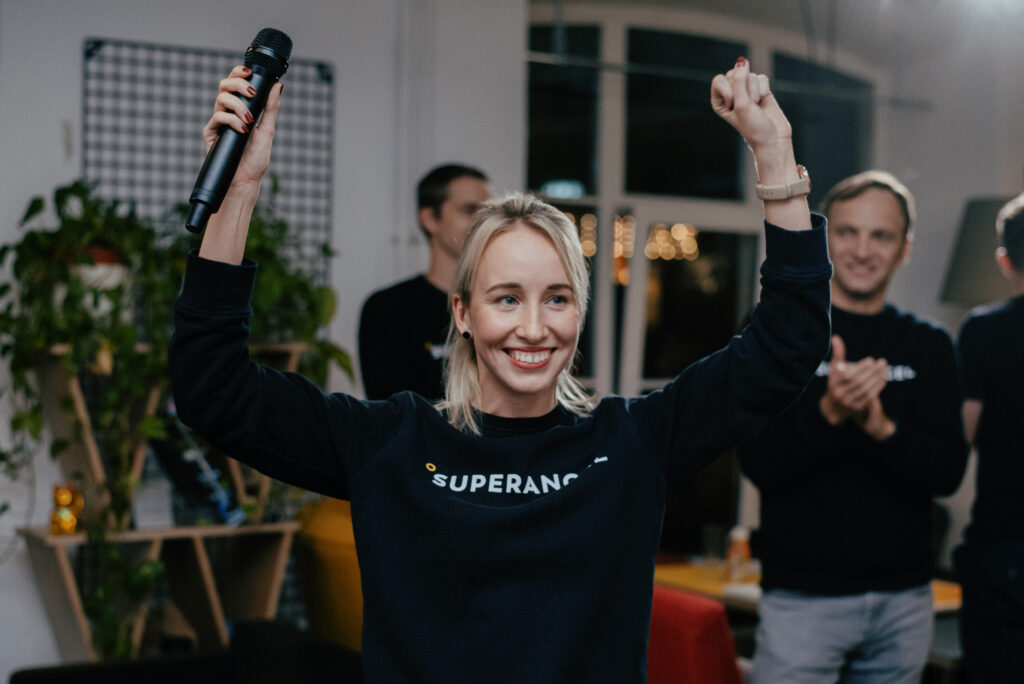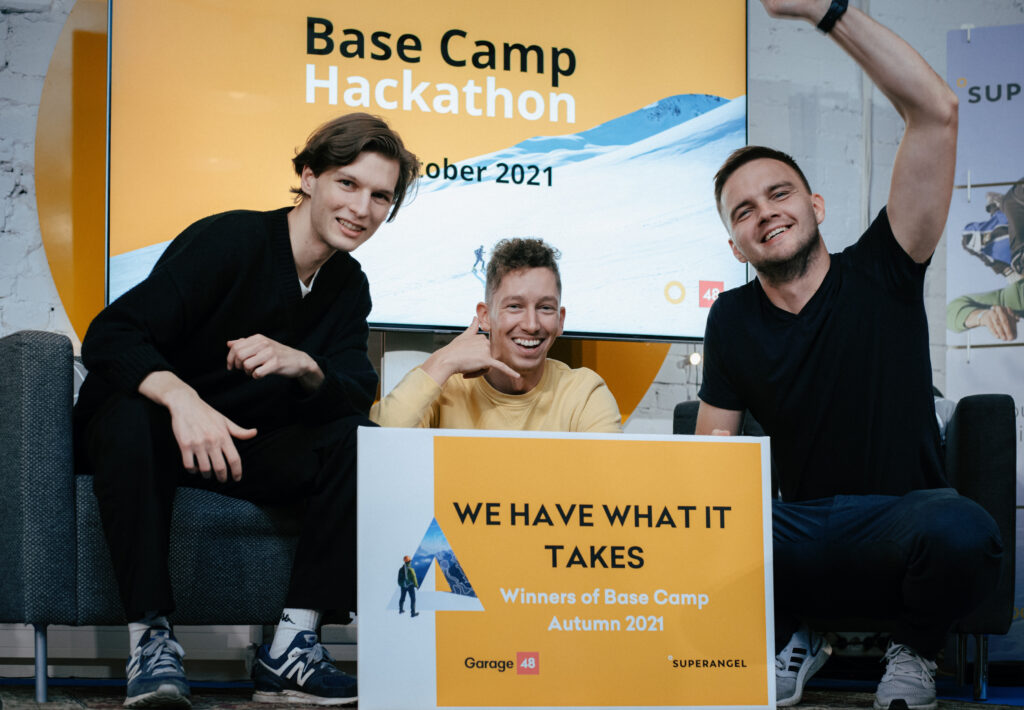👋🏼 Hey founder, are you fundraising for your early-stage startup? I’m giving you a head start.
I find myself repeating the same things in calls with founders, and whilst it’s okay to mentor founders in the early-stage regarding fundraising, there are pitfalls that you can easily avoid in the first place.
So here are some of the resources that might become handy when raising your Pre-Seed / Seed (and even Series A) round.
before you fundraise
Before you fundraise you should keep the below in mind.
Fundraising is most often not a 1-2 month sprint, especially in the current market conditions. You should estimate at least 6 months for the process so start reaching out early.
Your runway can either work for you or against you (graph below). Investors smell desperation: no runway = no leverage. And just like dating, you don’t want to come across desperate on your first date. So planning ahead is key.
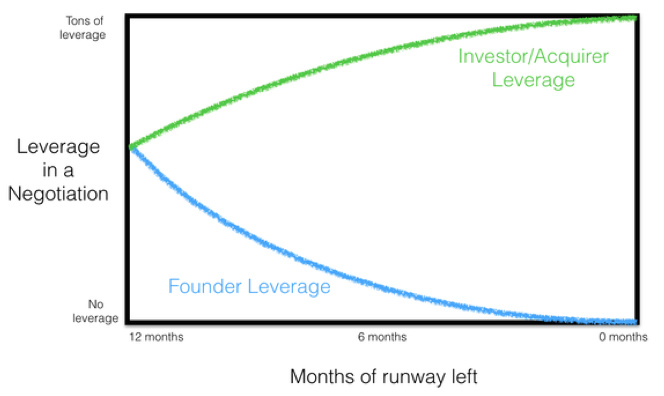
Tools for fundraising
- Fundraising CRM
- Investor pipeline
- Pitch deck
- Forwardable intro
- Dataroom
📌 FUNDRAISING CRM
Putting together your next round means you are likely to speak to 50-100 funds (yes, that many). Just like managing your client pipeline, managing the investor pipeline can make the process a lot more structured. Plus you’re able to easily share it with your current investors who can help you with intros.
You can consider the following tools to help with pipeline management (example stages Pipeline, Outreach done, Connection established, In process, DD)
- Excel
- Your existing CRM (e.g. Pipedrive)
Check out Helery’s fundraising cheat sheet as well, here.
📌 INVESTOR PIPELINE
Fundraising is both an art and science. Once you understand how investors choose their investment prospects (which is strongly linked to their strategy), you’re more likely to approach relevant investors. If you take this seriously, a must read to understand how investors think is Secrets of Sand Hill Road: Venture Capital and How to Get It.
TLDR: We also have investors who have committed to our fund based on a certain strategy. In most cases, VCs have clear geographical, sector, and stage focus. We can’t go out there and invest into whatever lands on our table. As an example, as a hardware company, you should not be surprised that you got a negative response from an investor that only does software. Therefore, understanding if your company matches the strategy of the fund, should be your first priority before spending more time with them.
Here’s a list of resources of VC lists and their strategies
- 100+ VCs investing into the Baltics (& Excel)
- A major list of global deeptech investors by Hello Tomorrow
- 29 European deeptech investors by Sifted
- Climate investors
- VCs and angels investing into female founders by GoBeyond Capital
- A list of 250+ active female angels by Sifted
- A list of female VC partners by Sifted
- Most active angel investors in Estonia
- Finding angel investors in Lithuania
Please bear in mind that these databases might not be regularly updated but are a great starting point.
📌 FORWARDABLE EMAIL: Make it easy for others to do warm intros for youtive Heading
Warm intros are by far the best way to get your foot through the door. Your job is to 1) find the people that can open doors for you (LinkedIn connections are the first obvious place to start with) and 2) make it as easy for the investor to forward the information. After all, they’re spending their credit to help you.
This template on how to ask for VC intros by Raimonds Kulbergs should be a mandatory item in your toolset. It’s one of the resources I share the most.
I personally prefer if these are written in a neutral tone. If I think the company is strong, I will comment on it myself. But I almost always delete the part when founders themselves write it in the blurb. Having an obvious statement of “This amazing, fast-growing company…” is not what gets investors interested. Or, if fast growth is what sets you apart, the least you can do is to back it up with numbers.
📌 PITCH DECKS
There are sooooo many resources available to help you guide through pitch decks. Use them. It’s so unfortunate when companies do it completely wrong. It shows that you’re not resourceful. If you have existing investors, use them for feedback.
As a starting point, read these:
- Seed deck template by Creandum
- Pitch deck template by Inventure
- Pitchdeck template by DocSend and guidance on putting decks together
- Sequoia Capital pitch deck (Twitter thread)
- Research and science about pitchdecks – complementary read
PS! Design matters! Especially if your pitchdeck is the first impression you leave. So invest in design or use templates by Canva / Pitch. I mean one can argue, if you can’t design a pitch deck, what’s your product’s UX / UI like?
Superangel receives tens of cold inbound requests a week from startups that we’ve never met before. It takes up to 5 seconds to formulate an impression based on pitch deck. Having no logical storytelling is the number two reason for not proceeding with the deal (first is no strategy match). But, I recently took a meeting with a young, energetic team of Biteful without having met them before because their deck just made so much sense!
✅ Quick DOs:
- Use titles to tell a story. If investors only read the titles, they should get the big picture. After all, if you write “Market” on a slide that clearly talks about the market, you’ve just wasted important space to convey a message.
- Make it mobile friendly. No small text / crowded slides please.
- Think how you present your team. Team is number one priority in early-stage investments. But pictures and titles say little of why your team is the right one to address this problem. Don’t be modest and show how your experience matters.
- Design!!
❌ Quick DON’Ts
- State your valuation. Unless it’s determined by the lead investor of this round. Otherwise, you just shoot yourself in the foot by either proposing something way too high or even worse, too low.
- Use clients logos who are not your clients – it’s easy to check
- Not necessarily related to pitch decks, but please don’t name drop all the investors you’re speaking to. It’s obvious if you try to create FOMO. And if none of these awesome investors end up investing then you’ve undermined your own strategy.
- Set fake deadlines. If you’re closing the round because it’s oversubscribed and you need to move, then yes, communicate deadlines. But if you’re just doing it to make investors move faster, it doesn’t work. If I’m closing other deals and you say I supposedly have a week to do DD to your startup, I’ll just pass.
📌 DATA ROOM
When investors get more serious in investing in your startup, they start asking for more information, which is standard. Have them ready to make the process move faster.
Creandum just launched a Seed Data Room Template that has everything you need to be prepared for your fundraising, including metrics, financial plan, customer overview etc. You can’t avoid this, so use the resources provided to you.
—
Superangel is an early-stage VC fund located in Tallinn, Estonia. We’re investing 100k-500k€ tickets from our fresh 50M€ fund into industry-defining technology companies in the Nordics and Baltics. We’re the backers of companies like Bolt, Veriff, Starship, Montonio, BOBW, and many more.
This summer I joined the product marketing team of Estonia’s up and coming startup & Superangel portfolio company — KOOS (“together” in Estonian), a stakeholder incentivisation platform.
KOOS is founded by tech visionaries and backed by VCs like LocalGlobe and Plural VC, among other prominent angels like the CEO of Veriff and Bolt. They offer flexible, equity-like benefits to non-employee contributors of business growth, without the complexity or hassle of shareholder schemes. A new form of ownership likely to shape how businesses interact with their most valuable contributors.

As an advisor, first adopter, community member or a valuable supporter, you can develop almost like your own portfolio of companies that you’re proud to be part of and contribute towards:
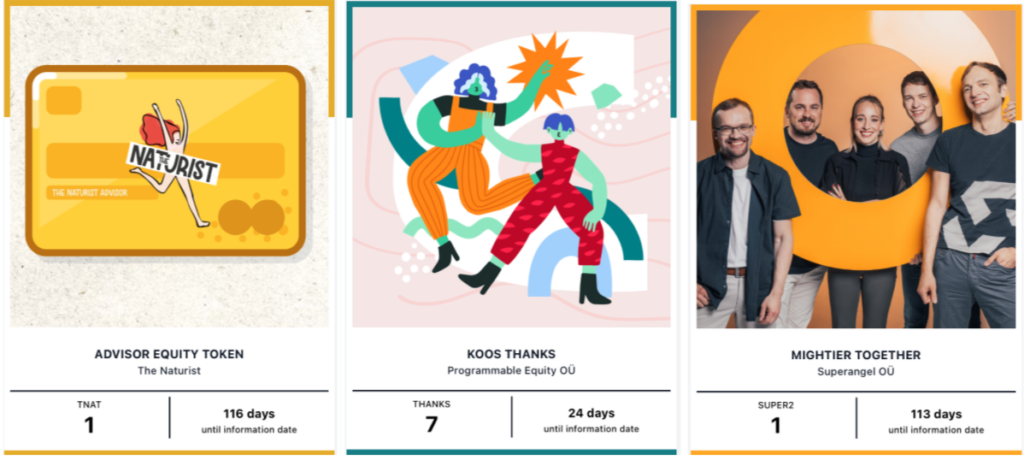
My main goal was to remind myself of the main challenges and opportunities that early-stage companies face. I spend a lot of time with many startups but I really wanted to deep-dive into one. By doing so, I can be more relevant to Superangel startups and rethink how we work with our teams. I achieved exactly that and I’m elaborating on the key challenges and good practices that I picked up from KOOS.
I Joined KOOS For 3 Main Reasons
🤝In addition to being an investor, Superangel is a client. That meant I got to develop our own strategy (we tokenised 5% of our carry) whilst providing feedback to KOOS team as a customer
👫 Epic team — KOOS was co-founded by Taavi Kotka, the first Chief Tech Officer (if you will) of the entire country, alongside several other serial entrepreneurs + domain experts
🏄🏼♀️ The trend that KOOS is riding on — a new form of ownership (i.e. engaging and rewarding the very people that drive business growth) & how the concept is leveraged by businesses is intriguing (more on that below)
*As a side note, the gender balance in the team is one of the best I’ve seen!
Becoming Relevant In Two-Months
I was most worried about whether two-months is enough to fully onboard to the company and start providing value. I know that as a small team, onboarding someone new takes a significant amount of time and effort. So I definitely felt the pressure to deliver.
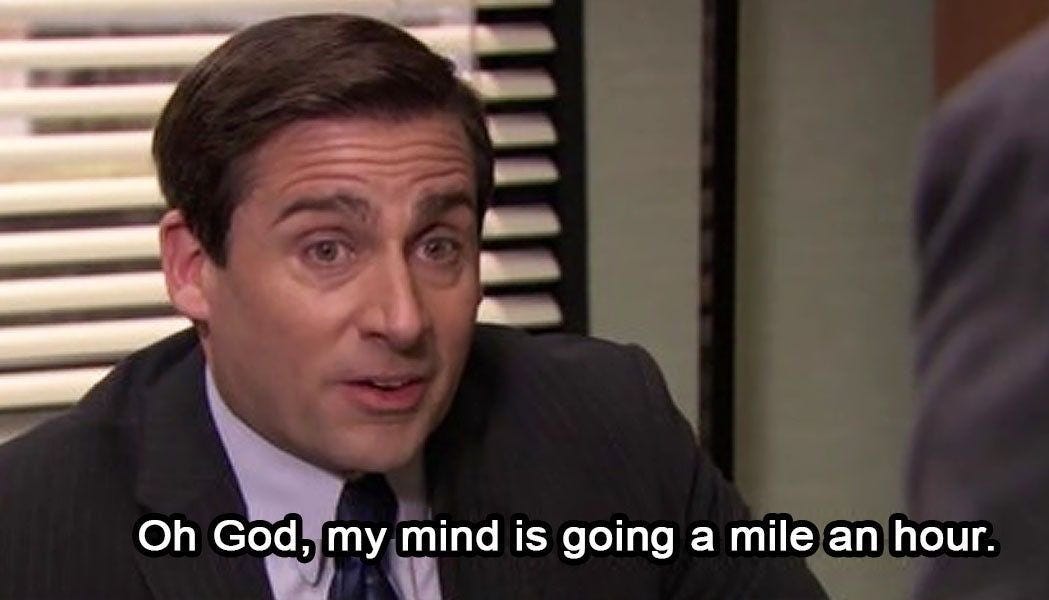
The first step of becoming relevant … was to sit and listen :’) I was a silent listener to all relevant meetings and also sat down with product marketing, customer support and sales teams individually to learn about their biggest challenges. I then went on to read the materials that the teams had put together for positioning, brand development, sales etc. Thanks to that I was able to get up to speed rather quickly. It can also be useful to reflect what you heard back to the team — a fresh perspective can go a long way.
Let’s Go Chat With Our Customers & Find Out All The Answers, Sounds Very Self-Explanatory
Two months flies by so quickly you can barely scratch the surface if there are no defined goals (ooh, isn’t this true with everything?!). So we set realistic (and somewhat measurable) goals and worked up from there. For example, we agreed that by the end of two months, I’d at least have interviewed 3–4 clients and drafted the first playbook of implementing the KOOS token program. It would serve as an input for putting together sales & onboarding collateral to minimise team’s input and empower clients to use the product the most impactful way. Easier said than done.
Here’s How It Went Down:
- I crafted customer interview scripts on Miro
- I defined three clear goals what I wanted to get from the interview
The goal of customer interviews was to map out all the challenges our clients faced so that we could provide better, proactive support. I also wanted to understand if there are smart hacks that they’re doing that could benefit others. Lastly, I wanted to clearly understand their use case and need for KOOS.
- Based on that I divided the interview into three core pillars with appropriate questions — must have & nice-to have questions (acknowledging that I might not have time to ask them all)
- Each pillar had their own context that I wrote down so I wouldn’t forget to add it during the interview rush
- I practiced it before with my team. Running smooth interviews is harder than it sounds. The key is to give A LOT OF context. I had to be reminded of this on several occasions because in my head I knew what I wanted to get out of it, but the customer didn’t. Therefore, during the interview I emphasised several times that the best result for me would be to map down as many problems as possible so the client wouldn’t feel they had to soften the truth.
- I asked permission to record the conversations so I could focus on running the conversations and listening rather than taking notes. After each interview, I listened it again, wrote detailed script and summarised it for other team members (I used Notion and Excel)
- I used the same conversations for client testimonials and social media content
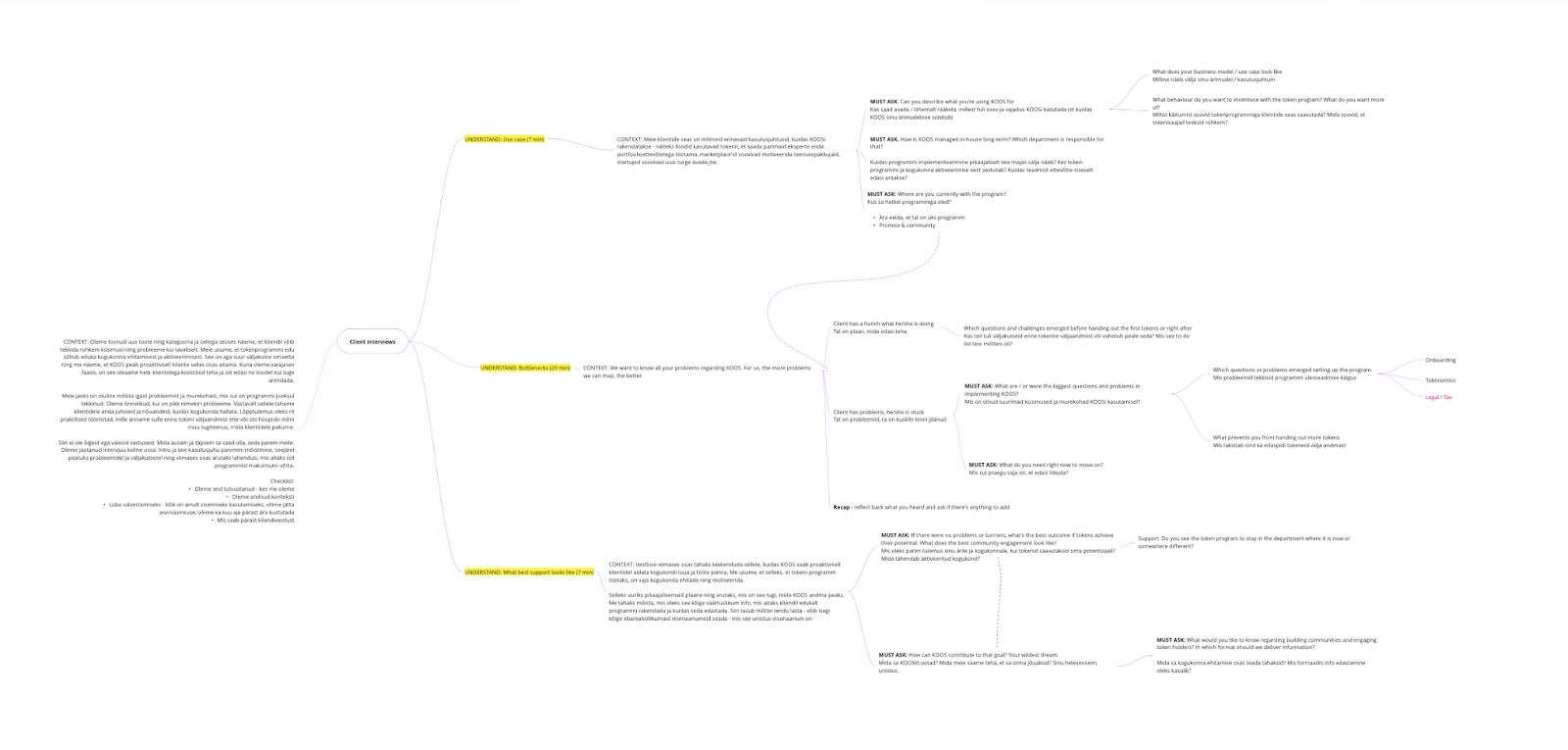
I’ve Got All This Knowledge Now, How To Make Sense Of It All?
In an ideal world, your clients all say the same thing and you know exactly what to focus on. The reality is probably different.
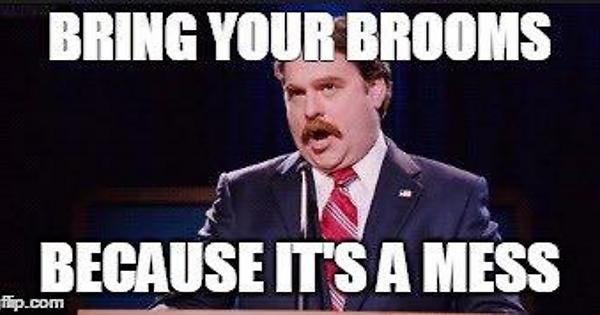
KOOS has many different customer profiles (marketplaces, startups, B2B) with varying use cases (referrals, community building, supply motivation). The resources and expertise that these teams have also varies, which means the level of support KOOS needs to provide differs.
It’s an ongoing process in which you just need to continue gathering data until there’s enough for pattern recognition. Maintaining an open mind and embracing that you don’t have rock hard truths at this moment is OK. You can, however, start forming loosely held hypotheses and use new data to either strengthen or lose them. That’s what we did. The product marketing team took the data I had gathered and formulated their initial thesis.
Anyyyyhow, from my conversations with clients, I started putting together a manual or a playbook of implementing the KOOS token system internally. I wrote down what I knew and didn’t know (it’s a messy document — I sent out my warnings before handing it over). For that, I also did some heavy research on communities, community-led businesses, shared ownership, tokenisation, marketing & brand development etc.
Here Are Some Good Resources On Tokenisation, Community Capitalism, Ownership Economy And Community Building
Shared ownership & tokenisation:
- Twitter thread on how a wellness app (sweateconomy.com) uses tokenisation to grow 80% a year (this account in general is a good source of knowledge)
- One of the few reports on the Ownership Economy 2022, sharing how, for example, token incentivisation is used to boost user loyalty
- Study: Bumped: The Effects of Stock Ownership on Individual Spending demonstrating how weekly spending increased 100% for brands which individuals received stock
- Twitter: 35 business ideas of how web3 could improve or disrupt the most successful companies — i.e. how could shared ownership be leveraged today
Community capitalism & post-marketing era: Podcast & Blog — Discusses how Web3 affects marketing (i.e. — ads are not the future)
Community:
- The best playbook in my opinion on how to build community driven businesses: https://www.lennysnewsletter.com/p/building-community
- Masters of Community podcast
- Community-led businesses ABC — https://www.communityled.com (I was really surprised to learn that some of very prominent tech startups have pledged that community-driven businesses are the future)
Let’s Be A Bit Smarter Than Last Week
Aside from my own activities, I was fully immersed in the everyday life of a startup. It was refreshing to see what are the actual challenges from the inside rather than having the VC glasses on.
I think these challenges boil down to two main things: operations / communication and focus.
When things are so hectic — e.g. you’re hunting for your first customers whilst trying to understand who are the best ones, each week someone onboarding to the company, opening up new markets, figuring out positioning & messaging, launching a new website etc. — it can be challenging to ensure important topics don’t fall off the table and that information is equally available for everyone.
In an early phase like that it’s likely that you don’t have efficient processes set up for data collection & sharing, and communicating between the teams (or in the early stage, individuals). There are overlapping conversations and topics, combined with opinions and ad-hoc brainstormings. This creates noise and it’s not unusual to feel overwhelmed.

At this point, maintaining focus is the most important, and hardest, thing to do. Learning fast is of utmost importance, which is why you really have to choose your battles. The issue is not a lack of ideas, it’s saying no to most things (but not to the right things 😅).
It’s soooo easy to be drawn into a new thread of conversations and go down the rabbithole or start brainstorming ALL the good things that should be there or happen. OK… but let’s focus and come back to the thing that moves the needle the most, right now.
As Taavi put it, the goal is to be a bit smarter than last week.
Actually, We’ve Got This
This little chaos was okay for me because I fully trusted the team to figure it out. So here are the good practises that I really liked about how the team thought and worked.

- KOOS had done a really cool and relevant product positioning exercise that was the basis for the rest of the operations, be it marketing, sales or product development. Positioning is something that in my experience startups rarely think of, either because there’s a lack of data or awareness.
KOOS used https://www.g2.com to narrow down to 3 relevant categories but realised that with each of them they need to do more explaining why they’re different than to emphasise on their strengths. So category creation was the only way to go (and the way Pirjo did it was impressive but unfortunately not scalable to other startups — so try to find your own Pirjo 😜)
- The importance of brand development. Messaging, branding, informative web, social media and supportive materials are a must, especially if building a novel product. KOOS made a decision to invest in this by hiring external agencies and experts — you’ll soon enough see a result of that.
- Sales meetings were recorded and monitored in Pipedrive. Each week, sales team showed stats on how they are doing and where each client is in the process. They tracked where the leads came from and how they were converting based on their origin. Sounds self-explanatory yet often basic operations like these can seem irrelevant, especially if the team is small and everyone works independently. Although, I should point out that in the early stages it’s also completely OK to focus on discovery and hence what you track can be different.
- Having a holistic overview of sales allowed other relevant teams to chip in and contribute. For example, each week product, product marketing, customer success and sales met to discuss interesting cases and main challenges. Typically we focussed on how product marketing can better support sales, the main questions that clients ask, which client profiles emerged and their use cases, and how to optimise sales processes. Having these people in one room once per week was a great way to align the teams and ensure the company was as customer-centric as possible.
- My favourite thing was the ‘Founder Hour’ (I took the liberty of naming it myself 😁). Each month Taavi gathered the whole team to share his vision of KOOS and the greatest opportunities / challenges that the team faces. This is the lowest hanging fruit that founders should do. Hearing the CEO of the company share his passion, enthusiasm and take on the company is super inspiring. Doing it often might feel like repetition but it isn’t, especially in a time where the team is growing and new people are settling in.
- Don’t get stuck doing everything yourself but ask for help. KOOS team involved several experts on tasks that either didn’t make sense to spend too much time on but were still necessary (e.g. content creation) or where figuring everything out would’ve been too time consuming and potentially costly (e.g. new market entry). This comes down to the focus point.
- ‘Why are we doing that?’ was a refreshing question that was asked more than once. And it wasn’t meant as a skeptical after-thought but more to ensure team members spent time on things with the most impact. It’s tempting to dive into the to-do list (that in a startup is never-ending) but zooming out to the big picture is a good way to reset.
- ‘Who’s accountable for that?’ falls exactly to the same category as the previous point. Don’t finish off a discussion without agreeing who will go forward with that.
I took a lot from only two months and came back with a much clearer understanding of what we as VCs can do to help support companies like these on a very fast-moving journey.
Thanks KOOS for being so welcoming & fun to work with! Now go and talk to their team how your business could accelerate growth through stakeholder incentivisation!

Warning: Undefined array key "file" in /data03/virt110260/domeenid/www.superangel.io/htdocs/wp-includes/media.php on line 1768
We’re very excited to launch the second Science Base Camp, taking place on March 18th following the first successful event last year. Together with our university and VC partners, we are bringing together some of the best teams in the Nordics and Baltics, and matching them with reputable investors.
Designed for technology-based teams to accelerate commercialisation
Science Base Camp is an investor-readiness day specifically designed for R&D intensive technology-based university teams. The teams are able to work alongside experienced investors with an understanding of deeptech and R&D, entrepreneurs and experts to validate commercialisation potential and increase investor readiness.
It can take a long time before science-based solutions reach the market. The opportunity to have meaningful discussions with investors enables teams to get exposure beyond typical dealflow calls and pitching events. Investors’ insights into the market can help teams understand the potential use cases of their technology and how to speed up commercialisation cycles.
Organised together with leading universities and VCs
We’re glad to welcome new partners to the network, including Chalmers University of Technology, Tampere University, University of Jyväskylä, Tartu Science Park, ESA BIC Estonia, Tehnopol. And of course, happy to welcome back Aalto University, University of Tartu and Taltech!
The event is organised by Nordic and Baltic venture capital funds and angel investors. Among the first participating VCs are Norrsken VC, Voima Ventures, Cottonwood, Karma Ventures, Practica Capital, Nina Capital, Butterfly Ventures, Nordic Ninja, Inventure, Possible Ventures, Innovestor, Acecap, ffVC. And the list keeps expanding!
Apply now until February 14th!
Applications are open for R&D intensive / science-based / deeptech teams and startups from universities interested in increasing investment readiness or involving venture capital.
The event happens virtually and is free of charge for the participants.
Applications are open until February 14th. More information is available on Science Base Camp website. Apply now here.
If you have any questions, please contact kaari.kink@superangel.eu
Superangel has put together an open-source database of venture capital funds investing in the Baltics. If you’re a startup founder looking for Pre-Seed – Series A funding or a fund looking to get to know the VC landscape in the Baltics, this database is meant for you.
The database reassures several points made by the recent Dealroom report on the startup scene in the CEE, namely:
- Local investors underpin the early-stage investment landscape, but at later-stage, companies look overseas for bigger cheques – this is also seen in the high saturation of local Pre-Seed / Seed funds in our list but not so much past Seed stage. 70% of the funds investing in Series A or beyond are outside the CEE.
- International investors have started to ramp up their activity in CEE in recent years – nearly 60% of the VCs listed in the database are located outside of the CEE.
Although there are already 100 VCs in the list, it is not exhaustive. The database can be completed by the community members. Here’s Google Sheets link where you can add / edit information the funds.
Base Camp revamped startups’ growth engines
Every single startup founder has more tasks on their hands than time for doing it. What if someone invented the time machine that allowed them to have extra days and complete all the strategic and important things on the to-do list?
This is where Base Camp comes in – a hackathon for existing startups wanting to do undistracted deep work with their team, and get weeks worth of work done in just 72-hours.
The 7th edition of the Base Camp hackathon was rather special. For the first time in a long time, we were able to host the participants in a hybrid setting, merging the positives of an online and off-site format. 16 Superangel portfolio and acceleration program startups and 5 not-yet-in-portfolio startups came together to get their growth machine going and do deep work without any distractions. What started out as a testbed for a new format of doing hackathons back in 2018, has now evolved into a community gathering of some of the most ambitious early-stage companies in the area.
“Beware! Base Camp is extremely addictive! After the first participation, it is very difficult to say no to their next hackathons. You can drop everything for the time of the hackathon and set focus on one or two goals. There’s just no time for micromanaging.” – Kelly Lilles, team Alpa Kids
Base Camp startups gained 400+ working hours
“Base Camp is a cheat code for growth.” – Darius Semper, team Ringo
21 startups jumped into Base Camp, or as some (old people) may say – a time-travelling DeLorean – and were able to gain 400+ extra working hours as a result of that. For some startups, these 72-hours gave a possibility to thoroughly discuss strategic topics that had been undecided for several months. Others managed to launch products and digital marketing campaigns to German, Polish, and Estonian markets. Tens of software products got upgraded to the next level. Feedback was gathered from 50+ customer interviews. Best of all, two startups announced that they will start doing Base Camps in their own team as this is the best way of getting deep work done. Nothing too shabby, right?
“The impact of what we did in 3 days will last for the next 6 months.” – team SquadPal
THE BLUEPRINT OF BASE CAMP
There are 3 critical components to building the 72-hour Base Camp time machine, where each element has its own nuances.
The mentors are world-class
If one thing is clear, it’s that there wouldn’t be any Base Camp without the amazing mentors who are willing to jump on board with us and share their invaluable knowledge and expertise. From design mentors who have been actively involved in the design industry for the past 20 years to digital marketing and tech experts who know everything, there is to know about marketing strategies, growth campaigns, KPI-s, engineering tech stacks, and building the MVP, the lineup of mentors was truly world-class this time.
“I’ve been part of the Garage48 hackathons since the very beginning. And this is by far my most favourite event to mentor. The quality of teams and content presented at the Base Camp is just exceptional!” – Helen Kokk, Digital Product Director at OCCO I Building a Revolutionary product for interior architects
What differentiates Base Camp 1:1 sessions from your regular hackathon mentoring sessions is that the 45-minute slots are a chance to actually go in-depth with a problem your startup is facing and get different perspectives on how to solve it. As one team jokingly put it, the 1:1 sessions are a great way to pick the industry best brains without spending money on consultancy hours and lengthen their runway in that way.
“It was just awesome. The teams were really well prepared and my first day was 100% booked with 1:1 sessions. We ended up discussing concrete problems related to user research and product designs but also what the future might bring to those teams.” – Maido Parv, Senior Product Designer at Wise
Helen Kokk, Katrin Kiviselg, Erko Risthein, Greta Pudan, Patrick Collins, Taavi Raidma, Gleb Maltsev, Kristina Randver, Maido Parv, Elar Killumets, Joanna Grudzinska, Sven Kirsimäe, Kristi Märtin, Pavel Karagjaur, Anari Hagel – we applaud you!
The speakers have been in your shoes
Getting the right advice at the right time can save startups tons of time. We listened carefully to what the most common challenges of participating startups are and brought in speakers with experiences from Bolt, Wise, Veriff, Starship and Salv, to name a few. Startups got insights on doing customer interviews and data-driven decision making, how to set up and measure the right KPIs, how to attract talent and build startup culture, how to fundraise successfully, and how the current actions of a startup can influence their exit opportunities.
Laur Läänemets, Taivo Pungas, Jeff McClelland, Marko Oolo, Käthe-Riin Tull, Reet Kaurit, Piret Saag, Sandra Verrevmägi, Karen K. Burns, Madis Lehtmets, Markus Lember, Gaspar Anton, Margus Uudam – your wisdom and insights were priceless!
The individuals bring talent and a pair of fresh eyes
Besides mentors and speakers, there’s one more secret sauce ingredient that helps startups to win time during the Base Camp hackathons and that is the talented individuals we hunt and outsource for our teams. But rather than just keeping the needs of the startups in mind, we also like to add value to the individuals- to be part of the next big thing, grow their network and break out from their everyday routine.
“I have always enjoyed being in the startup community – between those curious, smart and brave people – so joining the Base Camp hackathon as an individual participant was a no brainer for me. I wanted to experience the magic around it and develop the curious creator within myself.” – Asta Vasiliauskaite, team Clanbeat
“Participating at the Base Camp hackathon was a 10/10 experience for me and I would recommend everyone who is someone in the startup ecosystem to take part in the hackathon at least once and put their talents into use.” – Karl Aleksander Kivimägi, team Menken
the next base camp will take place in autumn 2022
Garage48 and Superangel would like to thank all startups and individuals that participated and applied and all the mentors and speakers who made the 7th edition of the Base Camp one of the most successful events we have had in the history of Base Camp hackathons.
One big applause for the organizing team or as we like to refer to ourselves, the kitchen side of the event – Merit Vislapu, Kaari Kink, Kalev Kaarna, Kairi Loomet, Tiit Tamme, Ahti Kaskpeit and Enriko Pedaksalu.
Stay tuned for the next Base Camp in 2022 and be the first one to hear when the applications open.
This blogpost is written by Merit Vislapu, Kaari Kink, and Kalev Kaarna.
How can a leadership and business coach help your startup grow into new markets and build strong teams?
Superangel was thrilled to have Mark Ashton as a guest speaker. Before focusing on coaching founders he has gained over 20 years’ experience in hands-on problem solving consultancy in many different businesses, and grew sales from $6 million to $20 million in a B2B high tech company in the USA. He describes it as a business leader’s baptism of fire.
His goal as a coach is to improve leaders and teams, help them make better decisions, build stronger business relationships, and grow their companies. He also helps European companies to enter and grow successfully in the USA and Canada.
In the session we covered:
- What can a coach help you as a startup founder or manager build successful teams?
- How can coaching change the way your team solves problems and brings new ideas to the table?
- How have Google, Apple, and other major success stories used a coach to help them operate in a high performing environment?
- What is Mark’s approach to coaching?
- How does he suggest to find the right coach?
Superangel was excited to host Antti Aalto, the co-founder of React & Share, a content improvement software at our Insights webinar. Antti has successfully implemented B2B sales growth principles described in famous Mark Roberge’s book “Sales Acceleration Formula” and expanded from Finland to the UK. Today they have a predictable sales model and have doubled their MRR within a year.
In the session we discussed:
- How to find ideal customers in a crowded market?
- How to understand which customers are not suitable for your business?
- How to set up a sales team in the UK?
- What should every startup learn and implement from Mark Roberge’s book “Sales Acceleration Formula”?
Insights that we found interesting from the session
- Churn is a lagging indicator for PMF. Find an indicator that works better and is specific for your business, e.g. number of seats occupied or messages sent
- Choosing to switch from long-term contracts to inital shorter contracts allowed React&Share understand, which clients are ideal for them and find PMF faster
- You can start accelerating sales when you understand your who is and is not your customer
- There’s a great difference between hiring the 1st and 5th sales person
- Test the coachability of the sales person during the interview process
- Prefer individuals who have previously shown great grit and resilience, i.e. has an athlete mindset
- Let sales people create their own action plan based on their target salary and reverse engineer from there
- If sales team cannot get hold of a lead, send your marketing team at them instead
Superangel was thrilled to host our webinar with Paavo Räisänen, the Investment Director at Maki vc on ‘What are Investors Looking for in Startups? Insights from Maki.vc’.
Maki.vc is a Nordic 80M€ seed-stage VC firm partnering with deep tech and brand-driven companies obsessed with challenging category norms.
In the webinar we discussed:
- How do VCs choose startups? Maki VC examples
- How can VCs offer value-add to your startup in addition to investment?
- Suggestions to startups looking for funding
For sales people the ocean of online webinars can be a nightmare. So many events but no way to network and get new contacts. In this Superangel Insights we were thrilled to have Piia Sander from Messente to share her experiences how she has solved that challenge.
You’ll find answers to the most burning questions, including:
- How to select the events that are actually relevant to sales?
- How to prepare for online events?
- How to approach people?
- How to follow-up?
- What not to do?
Our key takeaways are shared below.
- Choose events that match your Ideal Customer Profile profile
- Choose events with enough participants that your sales team can handle the preparation work and the meetings
- At the event approach people in a more casual, chatty way – less ’emaily’ and more LinkedIn style. Mention the value to them by explaining why you’re approaching.
- The focus needs to be on “YOU” and how I can help you. And by YOU, we mean your customer!
- Use the Sales Navigator at LinkedIn as a due diligence opportunity and homework tool to find out about for latest activity – learn the company’s news and latest insights
- Keep the focus of the call on listening to the client
- Set up a timeline when you’re getting back to them for a higher chance of reply
- Attendee lists are usually public on social media. Use that for prospecting and sending out a LinkedIn message
- Don’t start talking about yourself and not asking questions
Piia Sander works as a business development manager for Messente Communications, a global smart messaging gateway. Prior to Messente, she worked for over 7 years as a sales manager for Äripäev. With years of experience in active sales, sales management and coaching, Piia has the theoretical know-how and the practice to back it up.
Superangel is proud to have a Superangel Insights session with Hedi Mardisoo, co-founder and CEO of Cachet.
Hedi is among TOP15 women to watch in European fintech by Sifted and her startup Cachet is listed as a future unicorn prediction by prominent Estonian investors. She is going to share insights on building a network of 120+ key people and using it to prepare for a market entry.
In the session we covered:
- How to build a network of key people in your industry?
- How to prepare for meetings with mentors?
- How to prepare entering a new market?
- How to ask help so that it brings results and the intros you need?
Main takeaway from the session: Ask for help and you’ll be served.
- Personal follow-up email is a long term investment. Put together an email that makes sense even when looking back at it a year from now
- Successful ask is a key thing to successful networking. To ask well, you need to make it as easy for the other person to help you and spend their social credit
- Figure out whose problem your product is solving on the other side of the intro
- Start with markets that are not heavily saturated. Where are your key clients today?
- Tap into embassies and use local organisations to help get your foot through the door in new markets
- Hunger to grow, experience in the sector, good network and ability to solve problems, eagerness to build – formula for hiring a country manager in Cachet
- Have a specific person in mind you want in your company? Be bold and ask directly.
- Entering new markets and cultures means listening first and not pushing your ways only
- Check out Global Entrepreneurs Program if you want to relocate and take your HQ to UK
Thank you Hedi for an insightful session! Best of luck building Cachet!

